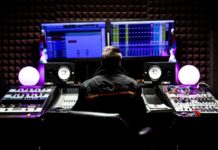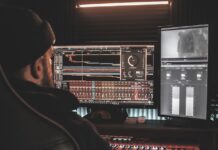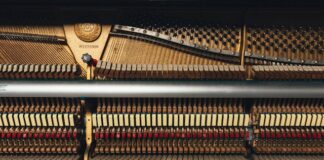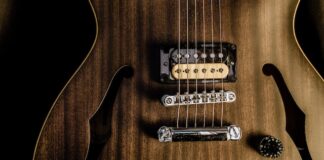When it comes to music production, choosing the right equipment can make all the difference. Whether you’re just starting out or you’re a seasoned professional, the right gear can help you create high-quality tracks that stand out. In this article, we’ll cover everything you need to know about choosing the right equipment for music production.
Music production can be a challenging but rewarding endeavor. Whether you’re creating music for fun or you’re a professional musician, choosing the right equipment is crucial for producing high-quality tracks. From the computer you use to the microphones you record with, every piece of equipment plays a role in the final product.
In this article, we’ll discuss the essential equipment you need for music production, as well as tips for choosing the right gear for your needs.
Understanding Music Production
Before we dive into the equipment, it’s essential to understand the basics of music production. Music production is the process of creating and recording music in a studio or home setting. The goal of music production is to create a high-quality final product that captures the artist’s vision.
The production process includes several stages, including recording, mixing, and mastering. Each stage requires different equipment, and it’s crucial to choose the right gear for each stage.
Choosing the Right Computer
Your computer is the foundation of your music production setup. Whether you’re using a desktop or a laptop, it’s essential to choose a computer that’s powerful enough to handle the demands of music production.
When choosing a computer, consider the following factors:
- Processor speed
- RAM
- Storage capacity
- Graphics card
For music production, we recommend using a computer with at least 8GB of RAM, a fast processor, and a solid-state drive for storage.
Audio Interface
An audio interface is a device that connects your computer to your recording equipment. It’s essential to choose an audio interface that provides high-quality sound and low latency.
When choosing an audio interface, consider the following factors:
- Number of inputs and outputs
- Connection type (USB, Thunderbolt, etc.)
- Preamp quality
- Compatibility with your computer and recording software
Microphones
Microphones are crucial for recording vocals and instruments. There are several types of microphones, including dynamic, condenser, and ribbon.
When choosing a microphone, consider the following factors:
- Polar pattern (directional or omnidirectional)
- Frequency response
- Sensitivity
- Output impedance
Headphones and Monitors
Headphones and monitors are essential for monitoring your recordings and mixing. When choosing headphones or monitors, consider the following factors:
- Frequency response
- Impedance
- Comfort
- Noise isolation
It’s essential to choose headphones or monitors that provide accurate, detailed sound without coloration.
Digital Audio Workstation (DAW)
A digital audio workstation (DAW) is software that allows you to record, edit, and mix your music. There are several DAWs available, including Logic Pro X, Ableton Live, and Pro Tools.
When choosing a DAW, consider the following factors:
- Compatibility with your computer
- User interface
- Features and functionality
- Price
MIDI Controller
A MIDI controller is a device that allows you to control your virtual instruments and other software using MIDI data. MIDI controllers come in various forms, including keyboards, pads, and faders.
When choosing a MIDI controller, consider the following factors:
- Number of keys, pads, or faders
- Compatibility with your software
- Build quality
- Features, such as aftertouch or pitch bend
Sample Libraries and Virtual Instruments
Sample libraries and virtual instruments are software that allows you to create realistic instrument sounds without the need for physical instruments. There are many sample libraries and virtual instruments available, covering everything from orchestral instruments to synthesizers.
When choosing sample libraries and virtual instruments, consider the following factors:
- Quality of the sounds
- Compatibility with your DAW and MIDI controller
- Features and functionality
- Price
Cables and Accessories
Cables and accessories are often overlooked but essential components of a music production setup. The right cables and accessories can help you achieve a high-quality sound and streamline your workflow.
When choosing cables and accessories, consider the following factors:
- Compatibility with your equipment
- Build quality
- Length
- Price
Budget Considerations
Music production equipment can be expensive, and it’s crucial to set a budget before making any purchases. Consider your needs and prioritize your purchases based on the equipment that will have the most significant impact on your recordings.
Testing and Choosing Your Equipment
Before making any purchases, it’s essential to test and compare different pieces of equipment. Visit a music store or a friend’s studio and test out different microphones, headphones, and monitors to find the gear that best suits your needs.
Tips for Setting Up Your Home Studio
Setting up a home studio can be challenging, but it’s essential to create an environment that’s conducive to creativity and productivity. Here are some tips for setting up your home studio:
- Choose a dedicated space for your studio
- Invest in acoustic treatment to minimize unwanted sound reflections
- Keep your studio organized and clutter-free
- Use ergonomic furniture to prevent fatigue
Troubleshooting Your Gear
Even with the best equipment, problems can still arise. Here are some common issues and how to troubleshoot them:
- Latency issues: Adjust the buffer size in your DAW settings to reduce latency.
- Static or noise: Check your cables and connections for loose or damaged parts.
- Low volume: Check your gain settings and make sure your equipment is connected correctly.
Conclusion
Choosing the right equipment for music production can be a daunting task, but with the right knowledge and guidance, you can build a setup that meets your needs and produces high-quality tracks. Remember to consider your budget, test your gear before purchasing, and prioritize your purchases based on your needs.
Investing in high-quality equipment can make all the difference in your music production journey. So take the time to research and choose the right gear for you and watch your creativity soar.
FAQs
- Do I need to buy the most expensive equipment for high-quality recordings?
- No, you don’t necessarily need the most expensive equipment for high-quality recordings. While high-end gear can certainly make a difference, it’s more important to choose equipment that fits your needs and budget and learn how to use it effectively.
- Can I use headphones instead of monitors for mixing?
- While headphones can be useful for certain aspects of music production, such as tracking vocals or recording in noisy environments, they are not recommended for mixing. Monitors provide a more accurate representation of the audio, and headphones can cause ear fatigue and make it difficult to hear certain frequencies.
- What is the difference between a dynamic and condenser microphone?
- Dynamic microphones are rugged and versatile, and are often used for live performances and recording loud sources like drums or guitar amps. Condenser microphones are more sensitive and detailed, making them ideal for recording vocals, acoustic instruments, and quieter sources.
- Can I use a MIDI controller without a DAW?
- No, a MIDI controller needs to be connected to a DAW in order to control virtual instruments and other software using MIDI data.
- Do I need acoustic treatment for my home studio?
- Acoustic treatment can help improve the sound quality of your recordings by minimizing unwanted reflections and echoes. While it’s not strictly necessary, it can make a significant difference in the quality of your recordings.
Source: http://www.biketraffic.org/









